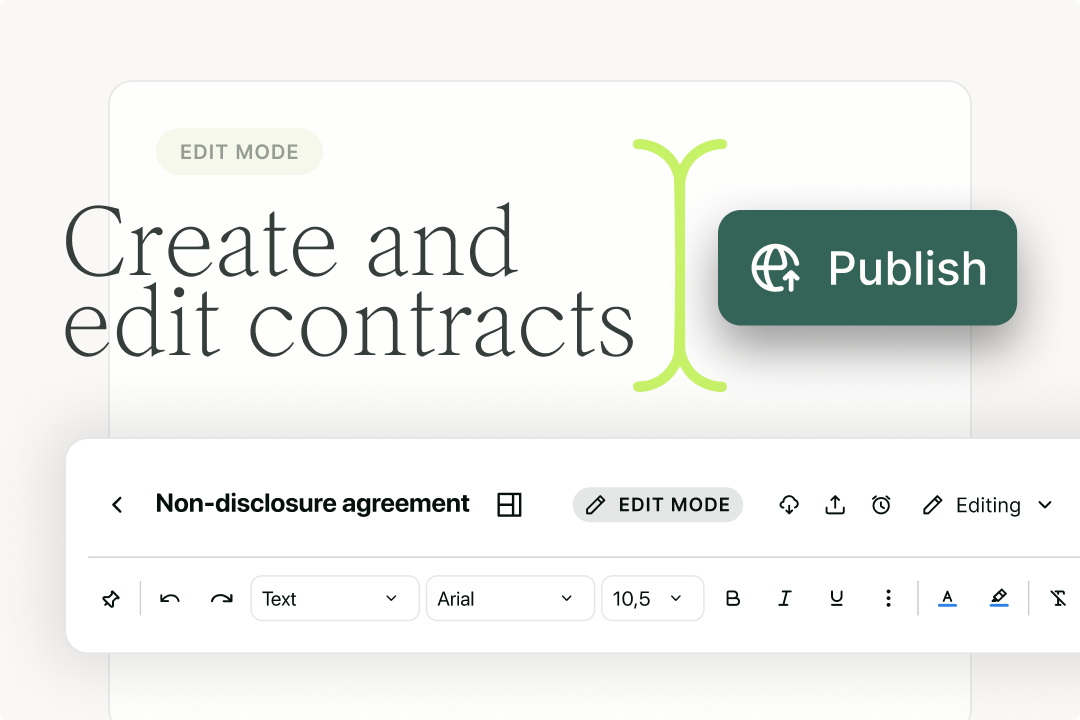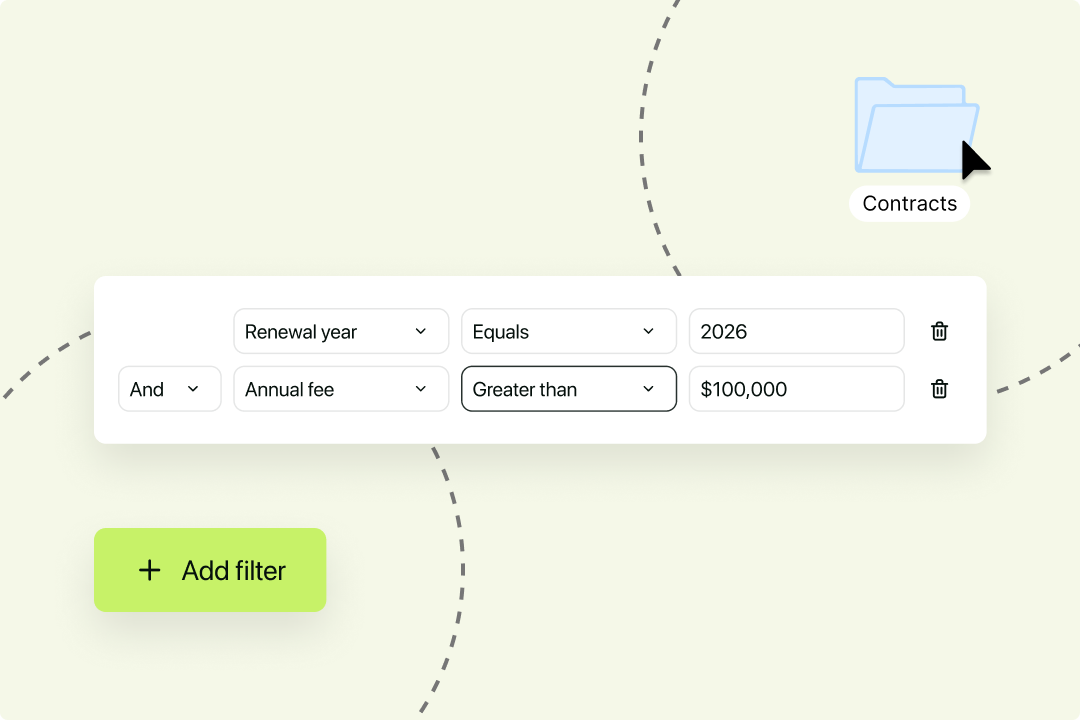Solutions
Customer Support
Resources


In this guide, you'll find out how to get your contract payment terms right first time, allowing you to avoid the friction and costs caused by errors and ambiguity.
Contract payment terms refer to the specific terms and conditions under which parties pay and get paid. These terms outline how and when payment will be made for goods delivered, services rendered, or work performed.
Contract payment terms are important because they give parties visibility into when money is expected to come into, or leave, their business. This is important for stabilizing cash flow and sticking to budgets.
They also form part of the contractual obligations between the parties, as a product or service is often provided in exchange for a fee. Failing to specify contract payment terms can result in disputes between parties and ambiguity, so it's important to outline them clearly.

The contract payment terms must stipulate the agreed-upon amount of compensation for the goods, services, or work provided. This can take various forms such as a lump sum, hourly rate, retainer fee, or instalment payments.
The best way to calculate how much a counterparty will pay varies depending on the nature of the contract.
For example, procurement contracts can be fixed-price contracts, or they can be cost-reimbursement contracts, which means a contractor is paid a set fee for their work but is also reimbursed for any additional materials or costs incurred.
Contract payment terms should always specify the preferred payment methods. These typically include wire transfers, checks, payment links, or electronic funds transfer (EFT).
However, each method will come with its pros and cons. Businesses usually opt for the payment method with the lowest fees and the fastest transfer rates. Failing to specify how counterparties should pay can jeopardize both of those things.
If the contract involves international transactions the chosen currency for payment must also be stated in the contract.
All contracts should have a payment schedule that outlines when payments are due. It can be based on specific dates, project milestones, or other predetermined events.
For instance, a contract might stipulate that 30 per cent of the total amount is due upon signing the contract, with additional payments due at certain project milestones.
This provides clarity when it comes to making and collecting payments, ensuring that all parties know when to expect payments to be made. It also protects parties in the event of non-payment since the schedule was outlined clearly in the contract itself.
Payment schedules can differ wildly between different businesses and projects. However, we’ve listed a few of the most common ones spotted in contract payment terms below.
Contract payment terms often include details on how invoices should be submitted, the payment due date, and any late payment penalties or interest charges. It's also important to include provisions for confirming the receipt of payments, such as receipts, acknowledgment of invoices, or other forms of documentation.
Again, what this section includes will vary depending on the nature of the contract and its objectives.
One of the most prevalent issues in contract payment terms is ambiguity. Ambiguous language in contracts, or vague descriptions, can lead to misunderstandings between parties.
For example, a payment term stating "payment due upon completion" could mean different things to different people. Is it upon the completion of a specific task, the entire project, or the delivery of goods?
The solution
To avoid ambiguity, payment terms should be specific, clearly outlining when, how much, and to whom payments are due. The best way to ensure consistency with these across agreements is to bake them into an automated contract template.

While it's important to have terms that encourage timely payments, setting excessively high late payment penalties can lead to dissatisfaction and disputes.
The solution
Contracts should strike a balance between protecting the interests of the payee and being fair to the payer. Overly punitive terms can strain business relationships and may even result in legal challenges.
Change orders, which modify the original contract, can significantly impact payment terms. Failing to address how changes in scope, timeline, or other project details will affect payment terms can lead to disagreements in the future.
The solution
To futureproof your contract payment terms, make sure your original contract includes provisions for handling change orders, including how they impact payment schedules and amounts.
Contract value leakage is a significant concern for businesses, often occurring due to loopholes and ambiguities in payment terms.
It refers to the loss of value or potential revenue from a contract because of unclear, poorly structured, or inadequately enforced payment terms.
The solution
Businesses can minimize contract value leakage by regaining control over contract payment terms. They can:
{{quote1}}
When it comes to contract payment terms, most problems can be solved by focusing on two things:

By delivering in these areas, you can not only ensure that your contract payment terms are favourable and robust, but you can also monitor compliance with these terms once the contract has been executed properly, reducing cash flow problems.
Juro's intelligent contract automation software enables businesses to do both of these things, with automated contract templates that give legal and finance teams more control over contract payment terms, and a data-rich contract repository that makes tracking terms simple.
To find out more, fill in the form below to book your personalized demo.
Juro embeds contracting in the tools business teams use every day, so they can agree and manage contracts end-to-end - while legal stays in control.


Sofia Tyson is the Senior Content Manager at Juro, where she has spent years as a legal content strategist and writer, specializing in legal tech and contract management.
Sofia has a Bachelor of Laws (LLB) from the University of Leeds School of Law where she studied the intersection of law and technology in detail and received the Hughes Discretionary Award for outstanding performance. Following her degree, Sofia's legal research on GDPR consent requirements was published in established law journals and hosted on HeinOnline, and she has spent the last five years researching and writing about contract processes and technology.
Before joining Juro, Sofia gained hands-on experience through short work placements at leading international law firms, including Allen & Overy. She also completed the Sutton Trust’s Pathways to Law and Pathways to Law Plus programs over the course of five years, building a deep understanding of the legal landscape and completing pro-bono legal volunteering.
Sofia is passionate about making the legal profession more accessible, and she has appeared in several publications discussing alternative legal careers.

Juro embeds contracting in the tools business teams use every day, so they can agree and manage contracts end-to-end - while legal stays in control.
Book your demo